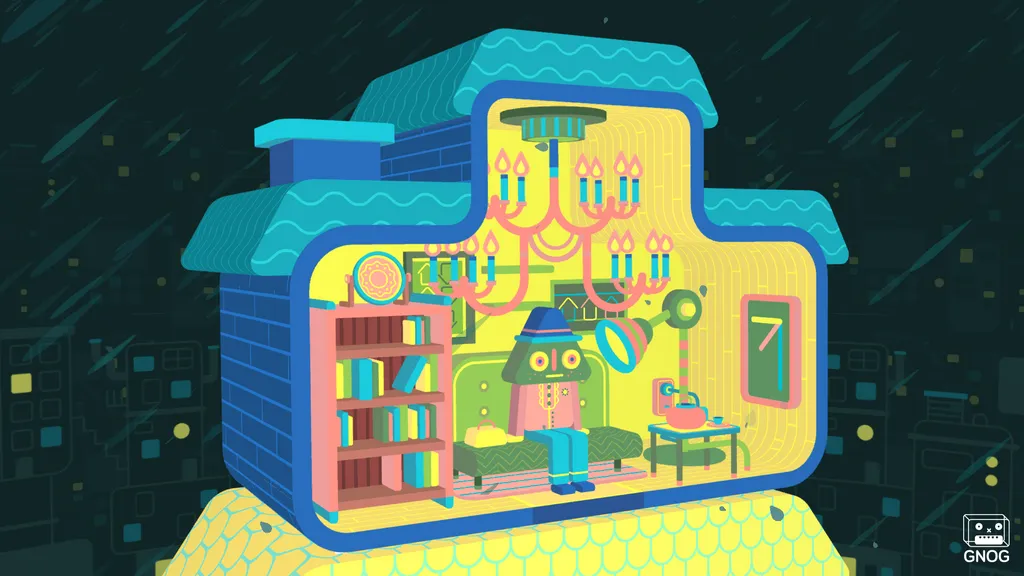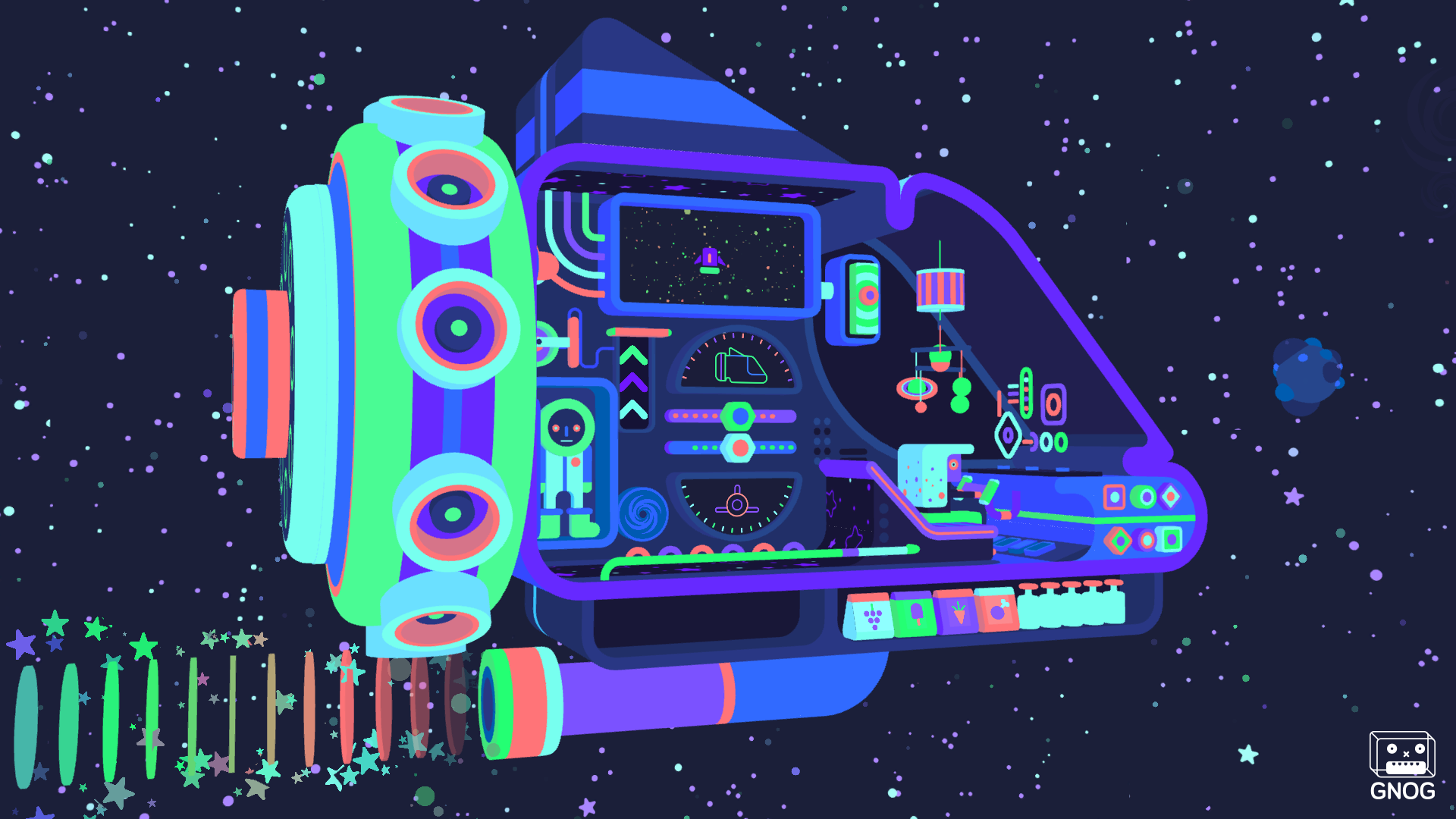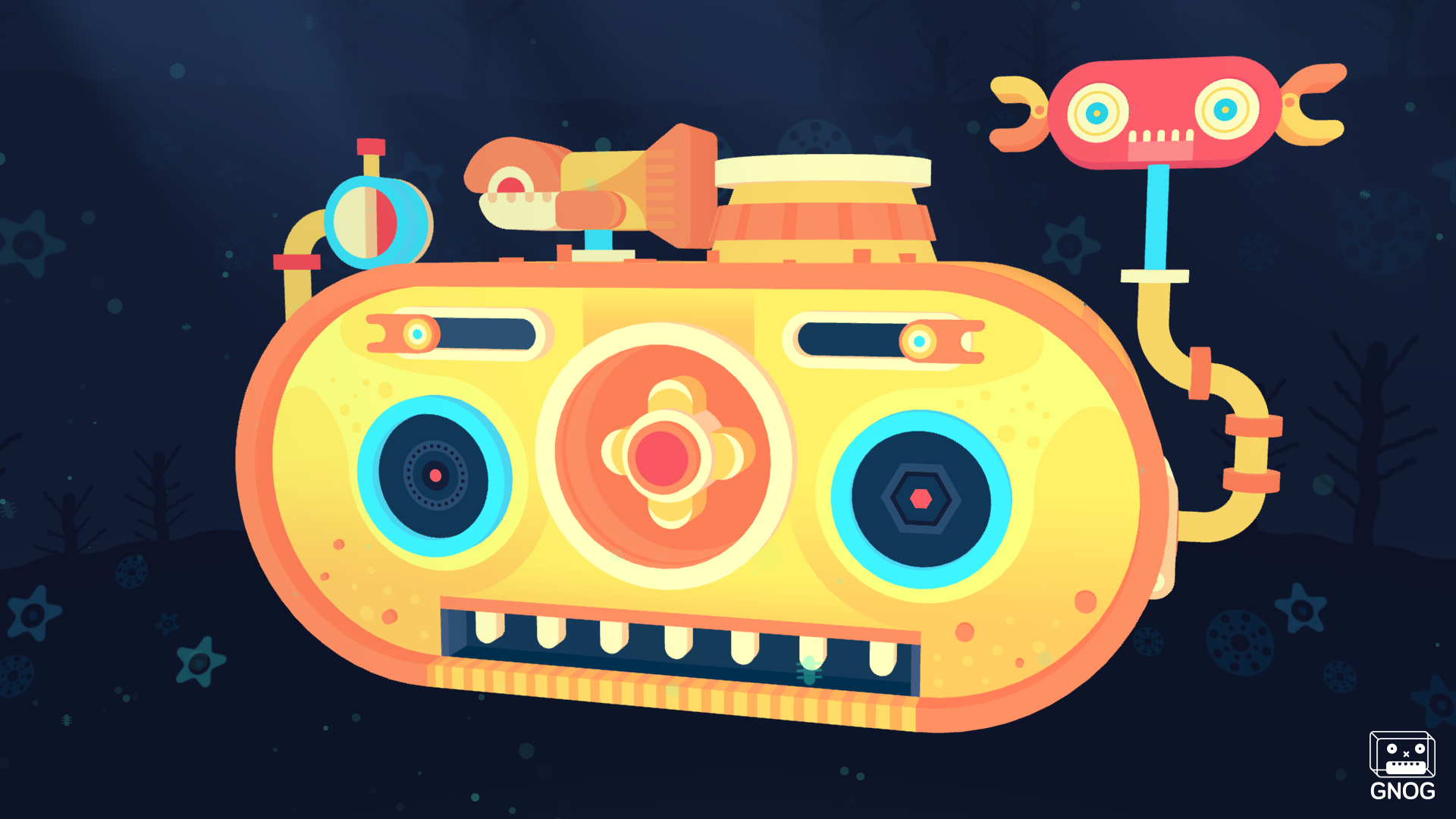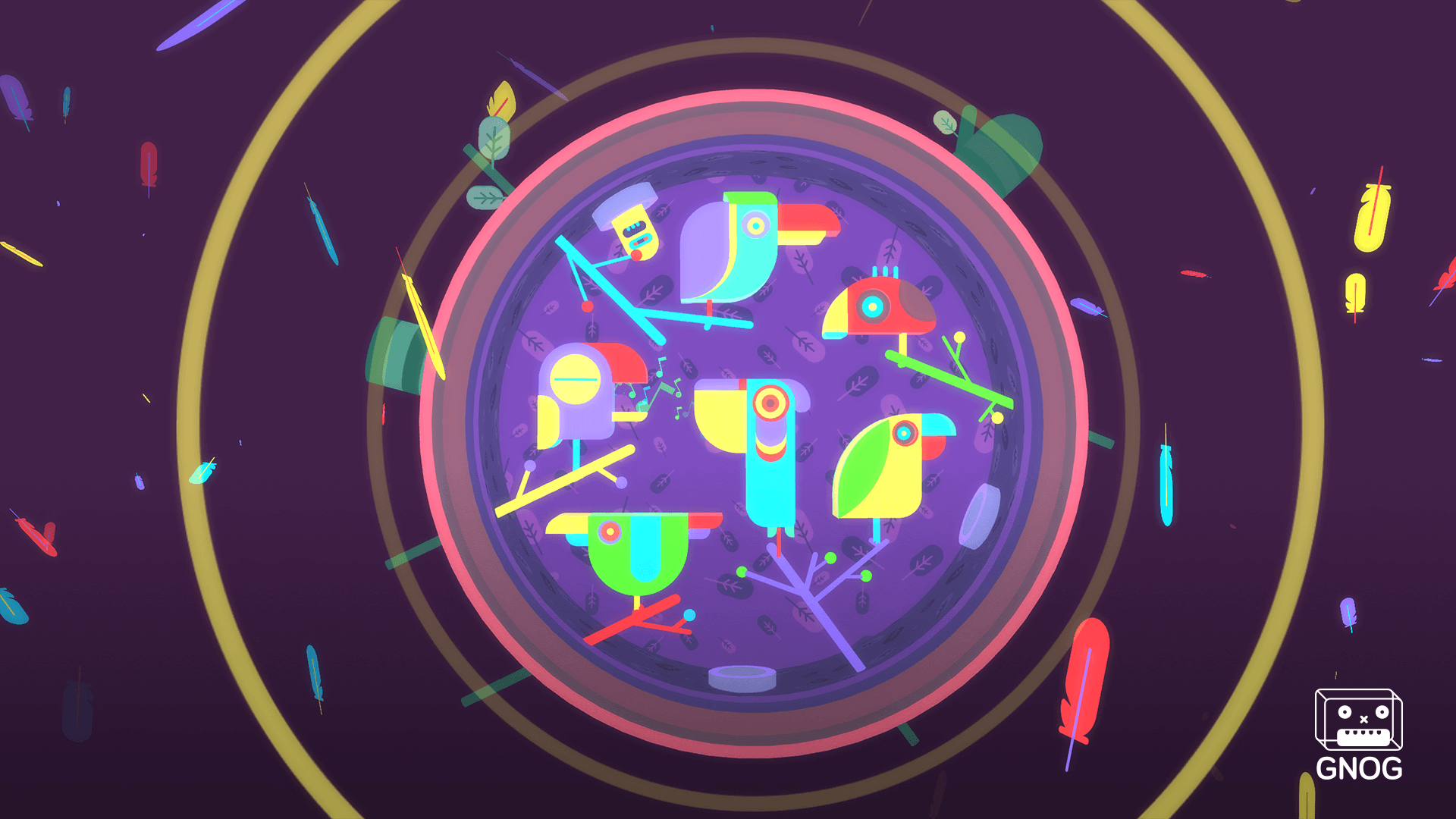GNOG is a really bizarre little game. Like, I don’t really even understand what I played and that’s kind of what I love about it.
On the one hand it’s an incredibly simplistic puzzle title developed by KO-OP and published by Double Fine, that has you poking around inside a wide variety of cleverly designed boxes that each represent tiny unique worlds bursting with color and character; but then on the other hand you’re learning a new language of game design every step of the way.
It’s easy to pick up and play but impossible to explain. There’s no tutorial at all other than an overlaid image of the DualShock 4 gamepad to just let you know that you should try nudging some analog sticks and buttons. Tilt the left stick, you’ll see a little circular cursor float around. Tilt the right stick and you’ll notice the mini diorama world on your screen moves. You learn how to flip it over with R2 and L2 soon after and that’s really about all there is to it.
That minimalism in terms of not only graphical style, but also in terms of game design, is a big part of what makes GNOG feel special as a puzzle game. In an industry that’s inundated with accessibility and over-explanation of everything, it’s refreshing in a way to be thrown into the deep end. Once it settles in that GNOG actually makes perfect sense, despite its esoteric beginnings, is when the magic happens.
In a lot of puzzle games you can feel yourself starting to get frustrated when you can’t figure things out. Just ask anyone that’s ever been stuck on a touch dungeon in a The Legend of Zelda title, or has tried slamming their head against that damned cube in Statik. But GNOG feels different. It’s not asking you to “discover” the solution, or find an answer to its riddle. Instead, it just wants you to feel things out and let the puzzles unravel on their own.
For example, one of my favorite levels is one of the game’s earliest stages, a rocket ship of sorts. The bright, beautiful animation of the ship blasting across the screen are shown, quickly followed by sirens going off, sparks flying, and the ship clearly breaking down. Obviously I’m intended to fix it up and help it get back to its rocketing ways across space. Naturally, I flip it around and start messing with the dials and knobs until stuff starts to work again. I understand that spinning this dial in this direction does that, and so on. The sense of discovery is never-ending and that feels intentional.
Each level represents a tiny microcosm of possibilities like this. You might fiddle around with a boombox shaped creature or it might be one that munches on pretty butterflies for a living. At the end of the day it’s not just the payoff at each level’s conclusion that makes the puzzles feel worth solving, but it’s the clever charm and smart design along the way that makes it worth exploring.
And although GNOG works perfectly fine outside of the PlayStation VR (PSVR) headset, I can’t recommend playing it without Sony’s device on your face. The ability to lean in and occupy the same space as the dioramas, as well as gain increased clarity and intimacy with the worlds cannot be overstated. The moments between levels that flush the screen with pulsing color are incredible to behold in VR and sincerely makes me hope this developer creates a music visualization program of some kind eventually.
While GNOG does a great job of reminding me of the wonder of discovery that has felt lost in most modern games, it does come at a bit of a price. The mechanics are just so stupidly simple that it’s gonna get old after a while. The child-like wonder only lasts so long before you wish there was more going on. At the end of the day, you’re just kind of clicking on stuff until something happens and even though the package surrounding that interaction is wonderfully designed and feels great to witness, it’s still pretty uninspired at its core.
GNOG is the video game equivalent of synesthesia. The bright colors are incredible, the simple, but disgustingly clever, puzzles are perfectly designed, and the experience inside the headset is wonderfully presented. However, it’s just such a bizarre and simple game, without anything new to really help it stand out. That it isn’t for everyone. But if you love gorgeous, modern art-style puzzle experiences that challenge your mind, then GNOG could be just your kind of weird.
GNOG can be downloaded starting today, May 2nd, from the PlayStation Store for $14.99. Read our Game Review Guidelines for more information on how we arrived at this score.





























